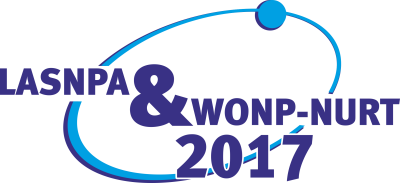Speaker
Description
The optimization of patient-specific treatment planning of hyperthyroidism with $^{131}$I is a desirable goal from medical and radiation protection point of view. The purpose of this work was to develop a software based on MATLAB, capable to handle non-uniform activity distribution at voxel level and made dosimetry calculation using the “S” factor from MIRD methodology, planning the therapeutic activity (TA) to warranty the prescribed treatment dose (DP), using a nuclear medicine multi-technology approach.
To verify the developed tool, the results of 6 patients dose therapy planning with theoretical 1D, theoretical 3D and “S” factors using SPECT and $^{131}$I biokinetics were compared (DP between 150-400Gy).
The discrepancy between the two 3D methods concerning to the thyroids average dose among prescribed dose were less than 10%, showing the system capability to proper dosimetry calculation. The 3D dose distribution dissimilarities between “S” factors and theoretical methods took the maximum value of 23% (voxel to voxel dose value / DP), near to the thyroids boundaries tissue. Despite of those difference is inside the typical uncertain range of dose determination methods; the issue should be study deeply using Monte Carlo (MC) approach in order to clarify the voxel dose accuracy of the two methods.
Conclusion: The 3D treatment planned dose distributions were completely no-homogenous, the significant difference observed between voxels should be study in order to optimized the hyperthyroidism iodine treatment.
Index Terms: optimization, patient’s specific treatment, I-131, Hyperthyroidism

